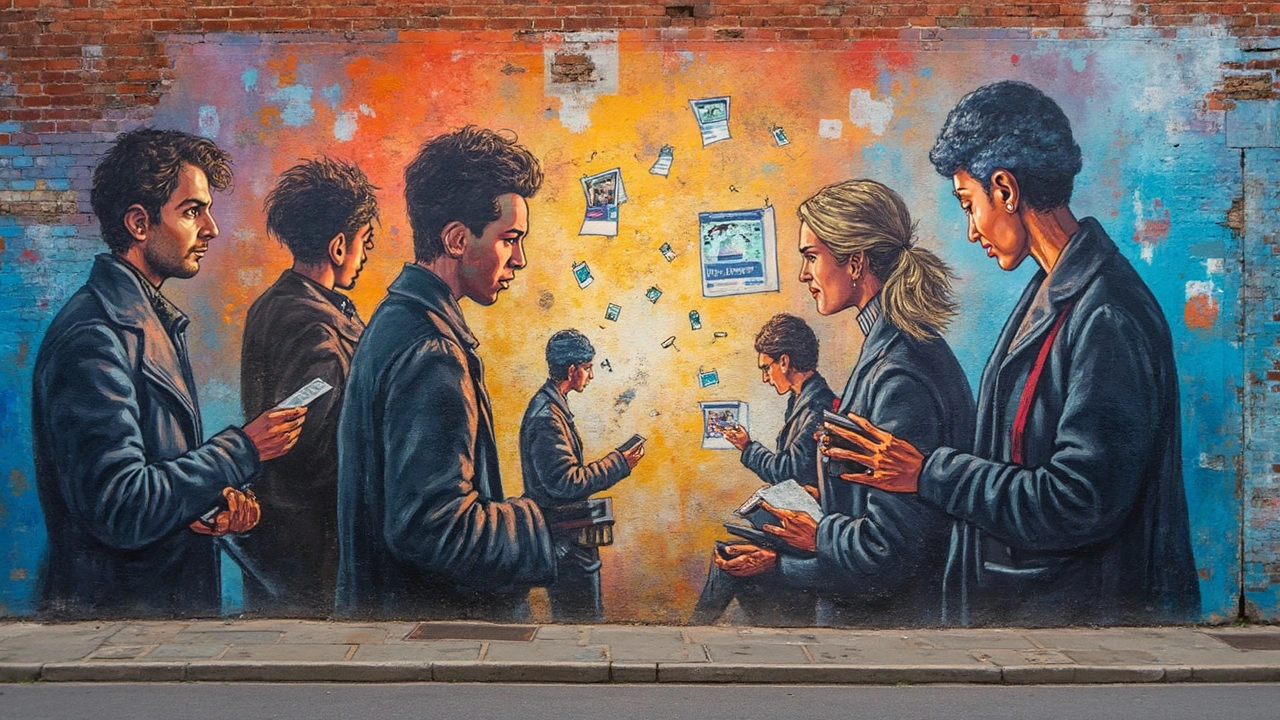You might not think twice when you read a blog post, your favorite newsletter, or even a product description. But did you know, there's a good chance a robot wrote a chunk of it? Not some scary humanoid, but a smart brain called ChatGPT. The leap from awkward, stilted auto-responses to captivating, human-sounding storytelling happened fast. And it's not slowing down. Everyone from marketers and students to CEOs and busy parents is using this tech. It’s erasing writer’s block and making good writing faster, cheaper, and more fun.
Why ChatGPT Is Changing Content Creation Fast
If you stood in a marketing office in 2020, you’d hear complaints echoing about time and budgets. Creating original, useful content took forever. And if you’ve ever tried writing five blog posts on “the benefits of reusable water bottles,” you know how fast the creativity tank runs dry. Fast-forward to now – ChatGPT and its friends are writing rough drafts, emails, ad campaigns, and even creative fiction that lands book deals.
People usually think of AI as cold, technical, even awkward. ChatGPT flips that idea on its head. Its training, built on massive sets of conversations, blogs, books, and questions, lets it pick up timing, tone, and real life examples. It doesn’t just spit out facts – it finds the right voice for your audience, whether you’re selling designer shoes or explaining cloud computing to beginners. In fact, a 2024 Statista report showed that 78% of digital marketers worldwide said they regularly used generative AI tools for their content workflows, up from just 34% in 2022.
If you’re a marketer, you’re looking at more than just speed. You care about Google ranking, clicks, and conversions. Generative AI like ChatGPT gets that, too. You tell it what SEO keywords to use, your brand’s style, or even to write at a fourth-grade reading level. Within seconds, you get copy tailored to your ask. Need 50 social captions for next week? Done. Prefer a more formal, educational newsletter? It can do that too. What’s wild is how well it tracks style changes: you might ask for “quirky and casual” one minute and “formal expert” next. It won’t bat an eyelash.
The data is staggering. Take this stat: according to HubSpot’s 2025 State of Marketing report, content teams using AI completed projects 60% faster, while reporting higher engagement on average. Not only is output up, but the quality bar isn’t dropping – readers actually stick around longer. The time saved is mostly reinvested into editing, strategic planning, or new channel experiments. Translation? Brands look more alive everywhere online.
Let’s not ignore real-life folks using it. Angela Liu, who manages a fast-growing Etsy shop in Boston, swears by ChatGPT for product blurbs, blog posts, and customer replies. What used to be a Saturday headache is now a 30-minute morning task. She spends more time designing, less time stressing over words. And she’s not alone. Survey data by Content Marketing Institute in March 2025 found that 84% of small businesses in the US planned to boost their use of AI copywriting tools.
But, as with any shiny new thing, there are growing pains. People still worry about bland, robotic writing or misinformation slipping through. The fix? Most companies are pairing humans and AI: ChatGPT drafts, humans polish. This dynamic combo delivers originality, saves hours, and keeps a brand’s personality on every page.
| Statistic | Year | Source |
|---|---|---|
| Marketers using AI for content (% global sample) | 2022 | Statista |
| 34% | ||
| Marketers using AI for content (% global sample) | 2024 | Statista |
| 78% | ||
| Savings in content project turnaround time (teams using AI) | 2025 | HubSpot |
| 60% faster |
This table shows how quickly people are jumping on board. It's not just a passing trend; it's a complete shift in how words get to your screen.

The Right Way to Use ChatGPT in Your Workflow
So, how do you actually get your hands dirty with ChatGPT? It doesn’t matter if you run a business blog, teach English, or just want help jazzing up your LinkedIn. There are a few habits you’ll want to steal from the pros.
First up: be specific with your prompts. ChatGPT is smart, but it isn’t a mind reader. The more info you feed it, the better it delivers. For example, don’t type “write an article about shoes.” Instead, try, “Draft a 1,000-word blog post about winter boots for women, focusing on style, comfort, and waterproof features. Keep it casual and persuasive.” The result? Way less bland, way more useful.
Next, always review what you get. Use it as a starting point, not the finish line. AI sometimes misses the fine points, drops a fact, or sounds just a bit too generic for your readers. Editing lets you sprinkle in personal stories, brandspeak, or a clever line that reminds people there’s a real person behind the words.
If you’re looking to make serious use of ChatGPT, try this workflow:
- Brain dump your ideas and notes into ChatGPT, and let it organize or outline your thoughts.
- Feed in research sources or stats, asking ChatGPT to write rich, informative sections around the facts.
- Request several versions of an intro or headline, then remix your favorite lines until you find a standout.
- Have ChatGPT check your content for tone and clarity. Ask for a more friendly voice or chop sections for brevity if needed.
- Always do your own spell check and run a plagiarism scan, just to stay on the safe side.
This technique isn’t just for blog posts or articles. You can draft sales emails, press releases, scripts, or even TikTok captions. The doors are wide open. Content teams are even deploying ChatGPT for translation, transcriptions, summarizing big reports, and answering frequently asked customer questions. This is a huge time saver for any team stuck doing repetitive copy work.
Pro tip: Connect ChatGPT with your favorite tools. Right now, lots of platforms—like Notion, Zapier, or HubSpot—offer plug-ins and integrations that make using it frictionless. For example, you can create templates where ChatGPT automatically turns meeting notes into clean blog summaries or generates newsletter outlines from new product announcements. In the 2025 AI Tool Trends report by G2, more than 65% of teams using content platforms said ChatGPT-integrated tools made their process not just faster, but more consistent and creative.
If you’re part of a niche industry, say biotech or legal, you’ll want to “train” ChatGPT further. Feed it publications, blog posts, or sample documents from your field so it learns the lingo and top issues. AI models love fresh data.
You can even use ChatGPT for brainstorming something new from scratch—think crazy campaign slogans, cool product names, or wild what-if blog topics. It works best when you toss it a handful of your weirdest ideas. Don’t just give it one command and stop. Tinker, ask questions, and get more versions. People who play around unlock the richest results.

What’s Next: The Future of AI and Human Creativity
People like to argue that AI will take writers’ jobs, but there’s a real twist happening. Instead of making writers obsolete, ChatGPT is kind of a superpower for anyone who creates with words. It removes the drudge work—rewriting dry technical paragraphs or pumping out endless SEO content—and frees writers up for the brainstorming, the storytelling, the lines that truly stick.
If you talk with content pros, they’re hiring more, not less. What’s different is the skill set. Now, good writers are also part editor, prompt engineer, and creative director. They know how to train AI on a brand voice and spot awkward phrasing a mile away. Smart brands are investing in “AI and content blends” either building internal teams that can wrangle both, or hiring agencies who do it all. If you’re teaching yourself, figuring out how to write the perfect prompt or edit AI results is like learning Photoshop in 1998: game-changing and buzzworthy.
And get this: In early 2025, Forbes ran a profile on small-town travel writer Jamie Torres, who used ChatGPT to scale up from one post a week to ten, all while booking more sponsorship deals. Her secret was simple: she did her first draft with AI, rewrote the top lines herself, and left comments for ChatGPT to adjust on the next draft. In her words, “It feels like I have a team of three, but it’s just little old me and my laptop.” That kind of leap shows up across all sorts of industries—from real estate to health coaching to e-commerce.
But AI isn’t perfect. It can get facts wrong, misunderstand nuance, or miss cultural context. Future models are already learning from mistakes, thanks to new updates that let brands upload real-time data, company info, and style guidelines directly. Some platforms now let companies use “private GPTs” trained just on their products, customers, and competitors. That kind of custom-tailored machine is a massive edge over generic tools.
And the cost is tumbling. Five years ago, hiring a team to write long-form guides could mean thousands per month. Now, you can crank out full outlines and first drafts for the price of a good coffee—then pay real writers to punch up the work. More content gets made, but quality shines because there’s more time for deep editing and the fun parts of creativity.
Think about it: Schools are using ChatGPT to help kids brainstorm essays, nonprofits are getting donor letters out in hours instead of weeks, and indie authors are building whole series with less burnout. The magic is in the partnership. If you treat it as your sidekick—not your rival—you get the best of both worlds. The future isn’t AI or people. It’s AI and people, building things no one could do alone.




Write a comment